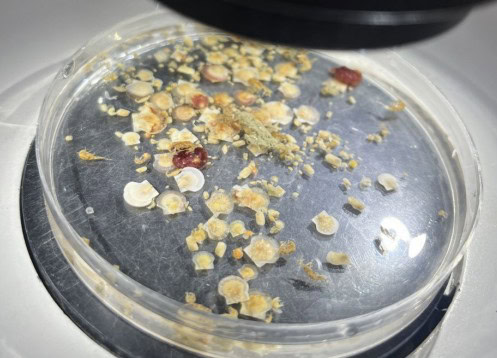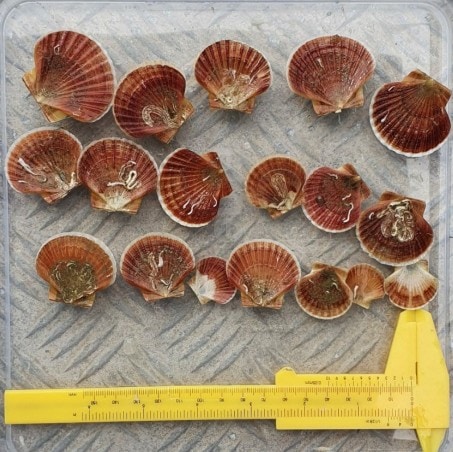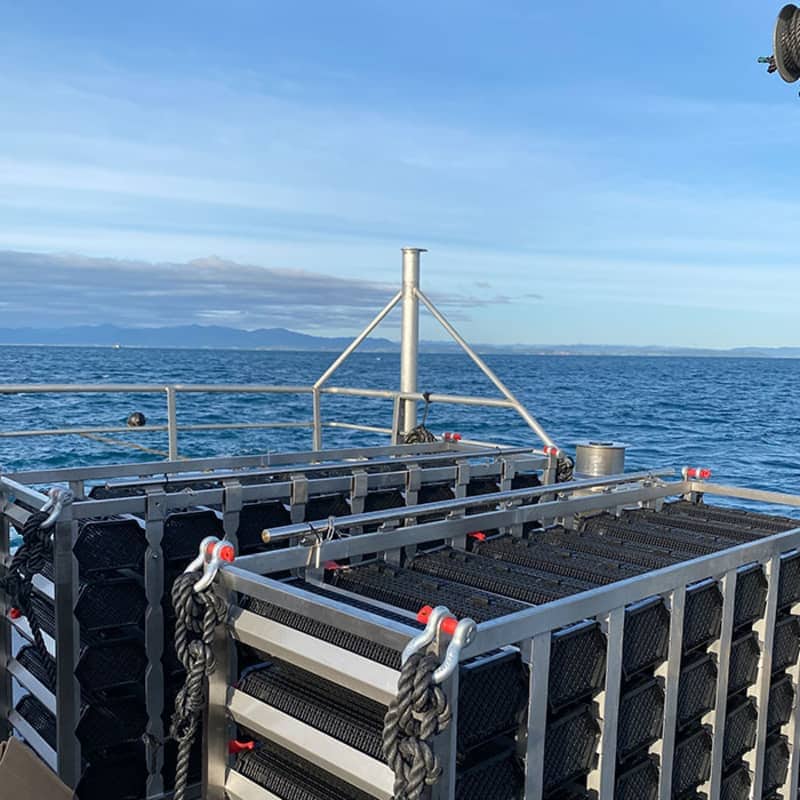By Deanna Elvines, Marine Ecologist
Two years into Cawthron Institute’s four-year Ngā Punga o te Moana open-ocean aquaculture research programme, there are promising signs of scallop production in a novel growing system in Tasman Bay.
Scallops were once abundant in Tasman Bay but have declined due to a range of factors. Cawthron’s Blue Technology and Aquaculture researchers previously developed the Shellfish Tower — a buoyancy-controlled structure fixed to a seabed mooring. This programme provided the opportunity to trial the Shellfish Tower as a method for growing scallops.

In June 2024, scallops around 25mm in size were seeded into the system and have been monitored since. After eight months, they have doubled in size — demonstrating that scallops can thrive in this environment.
The Shellfish Tower holds the scallops in trays 15 metres above the seafloor, keeping them away from predators and siltation. Previous grow-out trials in New Zealand have been challenging, as the species is sensitive to disturbances such as wave action and handling.

The seabed-fixed system helps reduce these stressors, which are more problematic in surface-floated systems. While designed with open-ocean aquaculture in mind, the system also shows strong potential for sheltered coastal areas.
The team measures growth, survival, stocking density and environmental influences to understand the scallops’ ideal growing conditions. Because scallops dislike handling, performance is only measured every few months. Long-term sensors attached to the system continuously record data on temperature, light, salinity, turbidity, chlorophyll, nutrients and environmental DNA.
On the most recent inspection, researchers observed that the scallops had developed gonads. While this is not ideal for commercial production at their age, it is an important indicator that the scallops are healthy and that the growing conditions are favourable.
The MBIE-funded programme is also investigating seaweed and oyster production systems, as well as solutions to key challenges like biofouling, which adds weight and drag to structures and can harm the shellfish. Instead of relying on costly manual control, the team is exploring nature-based methods.
Researchers are also monitoring scallop spat settlement to understand how much spat arrives in the area and when — critical knowledge if wild spat are to support commercial operations. Encouragingly, spat supply in Tasman Bay appears relatively healthy, and the team is eager to learn more to ensure it is sustained into the future. A second scallop cohort will be seeded early this year, applying lessons learned from the first trial. With just under two years left in the programme, the team is excited about the progress still to come.

